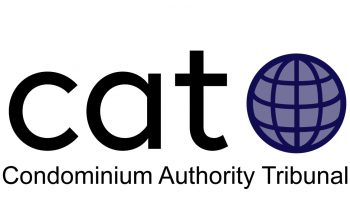 September 2019
September 2019
The Condominium Authority of Ontario (CAO) became part of the condo governance landscape September 2017. For those not yet familiar with the Condominium Authority of Ontario, they provide resources and information for condo owners, residents, managers and directors. They mandate procedures the condo community must adhere to. CAO is self-funded through a monthly fee paid by all condo owners, adheres to government legislation and follows their directives, and is a not-for-profit organization.
CAO is unique in that it taxes residential condominiums. Single family dwellings and rental properties are not taxed in this manner. The tax is charged to the condominium corporation so is invisible to most condo owners. By virtue of this direct tax we view the CAO as having a direct obligation to those it represents.
Each year Toronto Condo News offers a report card on their efforts. This year our Report Card includes advice on how CAO can be more responsive to its constituency.
In its first year of operation CAO received a performance grade of “B”. There were high expectations, some of which conflicted, about what this government-mandated organization could or should achieve. There was no assurance CAO could successfully balance expectations and be effective. Our Year One Report Card concluded with “Much is expected of the Condominium Authority of Ontario in the coming year. Its first year of operation has been a good one. Improvement is anticipated in the coming year.”
Overall Grade D
CAO remains irrelevant to most of the condo community. Condo residents have no understanding of why this organization exists, what it does or how it impacts on them. Communications and initiatives by CAO suggest a general disinterest in the affairs of condo residents as compared to Year One.
 This has been a disappointing year in which the Condominium Authority of Ontario failed to capitalize on goodwill developed in its first year and the community’s desire for it to succeed.
This has been a disappointing year in which the Condominium Authority of Ontario failed to capitalize on goodwill developed in its first year and the community’s desire for it to succeed.
Communications D-
 CAO, if it is to be successful in the eyes of its constituency, needs to listen to and work with the condo community. Acting as a conduit for government interests and promoting itself through condo vendors is unlikely to endear itself to those paying its bills. Communication in the form of self-promotion, filing and payment deadlines, and general surveys failing to address current issues may satisfy internal purposes while offering nothing useful or practical.
CAO, if it is to be successful in the eyes of its constituency, needs to listen to and work with the condo community. Acting as a conduit for government interests and promoting itself through condo vendors is unlikely to endear itself to those paying its bills. Communication in the form of self-promotion, filing and payment deadlines, and general surveys failing to address current issues may satisfy internal purposes while offering nothing useful or practical.
Last year CAO was advised, as an organization directly funded by condo owners, to do a better job at listening to, responding to and communicating with its constituency. In this they have failed.
Mandatory Forms D-
Mandatory forms were viewed favourably despite poor communication and implementation. One year later it was expected that deficiencies be resolved. Today, forms remain inaccessible to most and unnecessarily difficult to complete.
Electric Vehicle Procedures C
Forms and procedures for implementation of Electric Vehicle Charging Stations (EVCSs) were introduced in Year One in advance of regulations that took effect May 1, 2018. All this effort is premature for a product embraced by less than one percent of the population and unlikely to grow appreciably for at least a decade. Using condo owner fees to push for investing hard earned money on such a singularly uncertain upgrade remains an inappropriate political initiative unworthy of this consumer-funded agency.
Condominium Authority Tribunal (CAT) C
The online tribunal to help settle and decide condominium-related disputes in Ontario is an ambitious undertaking. Its preliminary focus on records-related disputes was reasonable despite failing to address the vast majority of condo-related disputes.
CAT is reported to have produced 14 rulings and heard a few hundred complaints based on a November 2018 presentation to condominium managers and property management companies. The low caseload, 2.3 applications per week, contrasts sharply with the claimed need for its establishment. The Civil Resolution Tribunal in British Columbia offers a better example of what was expected of CAT. In its smaller market this tribunal handled about 1,000 condo complaints covering a broader range of issues and resolved more than half during a comparable period.
Dispute resolution was promoted as simplified, faster and cheaper. It was expected to encourage condo directors to make better decisions. Considering the surprisingly low number of complaints and rulings the value of this tribunal is questionable. At this time there is no information available about when CAT will begin hearing disputes about non-records-related disputes.
CAT appears to be an unnecessary and unexpectedly costly burden on the condo community. There is no information about its effectiveness or when it will expand to handle what is presumed to be the majority of condo-related disputes.
Public Registry C-
The Public Registry “discloses” information already available through any condominium corporation. Reporting errors include astronomically high unit counts and incorrect street addresses that have yet to be rectified. Posting this information online, while possibly achieving some internal disclosure objective, lacks any practical purpose we can identify.
A better approach would be to pair this information with digitized audited financial statements for each condominium corporation while anonymizing data so it can’t be identified. This would provide a trove of highly useful information for condominium communities to utilize:
- Costs of condo operations for comparable buildings
- Energy efficiency upgrade costs by building size
- Building revenues by occupancy
Once this financial data is in the public domain condominium corporations, private businesses and government agencies could access it. Businesses could create analytic tools and reports utilizing this data to be used by condominium corporations and those that support the condo marketplace. This information would offer solid data on costs and practices thus eliminating the cost, confusion and misdirection of invalid assumptions.
 Better and more poorly run communities would be more easily identifiable thus creating motivation and incentive to improve.
Better and more poorly run communities would be more easily identifiable thus creating motivation and incentive to improve.







